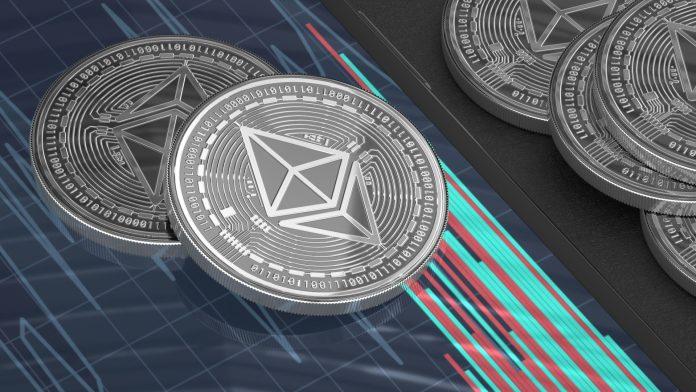Ethereum is one of the most widely used blockchain networks, serving as the foundation for decentralized applications (dApps), smart contracts, and DeFi (Decentralized Finance) platforms. However, as adoption has surged, Ethereum has faced significant challenges, including high gas fees, slow transaction speeds, and network congestion.
To address these issues, developers have introduced Layer 2 (L2) scaling solutions, which enhance Ethereum’s efficiency without altering its core protocol. These solutions aim to process transactions off-chain or in more optimized ways, thereby increasing throughput and reducing fees while maintaining security.
This article explores the different Ethereum Layer 2 scaling solutions, how they work, their advantages and challenges, and their impact on the blockchain ecosystem.
What Are Ethereum Layer 2 Scaling Solutions?
Ethereum Layer 2 solutions are frameworks built on top of the Ethereum mainnet that handle transactions off-chain before finalizing them on the blockchain. These solutions allow for faster and cheaper transactions while retaining Ethereum’s security model.
Types of Layer 2 Solutions
✔ Rollups – Bundle multiple transactions into a single transaction before submitting it to Ethereum.
✔ Sidechains – Independent blockchains that run parallel to Ethereum but interact with it.
✔ State Channels – Allow participants to conduct transactions off-chain before settling on-chain.
✔ Plasma Chains – Create child chains to process transactions independently.
Each approach has its own advantages and trade-offs, which we will explore in detail.
Key Ethereum Layer 2 Scaling Solutions
1. Optimistic Rollups
✔ How They Work: Optimistic rollups bundle transactions off-chain and assume they are valid unless proven otherwise. Disputes can be resolved through fraud-proof mechanisms.
✔ Popular Projects: Arbitrum, Optimism
✔ Pros: Reduces gas fees by over 90%, maintains Ethereum’s security model.
✔ Cons: Potential delays due to dispute resolution periods.
Example:
Arbitrum allows users to interact with dApps like Uniswap and Aave at lower costs while still benefiting from Ethereum’s security.
2. ZK-Rollups (Zero-Knowledge Rollups)
✔ How They Work: ZK-Rollups use cryptographic proofs to validate transactions off-chain before submitting them to Ethereum.
✔ Popular Projects: zkSync, StarkNet, Polygon zkEVM
✔ Pros: Faster finality, increased scalability, and lower gas fees.
✔ Cons: More complex cryptographic computations, requiring higher processing power.
Example:
zkSync enables instant transactions with minimal fees, making it ideal for DeFi applications and gaming platforms.
3. Sidechains
✔ How They Work: Sidechains operate as independent blockchains connected to Ethereum, handling transactions separately but periodically settling on the mainnet.
✔ Popular Projects: Polygon PoS, xDai, Ronin
✔ Pros: Faster transactions and minimal fees.
✔ Cons: Less secure than rollups since security depends on the sidechain validators.
Example:
Polygon PoS enables high-speed transactions for dApps like OpenSea and Aave, reducing congestion on Ethereum.
4. State Channels
✔ How They Work: State channels enable off-chain transactions between users while only recording the final state on Ethereum.
✔ Popular Projects: Raiden Network, Connext
✔ Pros: Near-instant transactions with no gas fees.
✔ Cons: Limited to predefined participants and specific use cases.
Example:
Raiden Network allows fast peer-to-peer payments, similar to Bitcoin’s Lightning Network.
5. Plasma Chains
✔ How They Work: Plasma chains create “child chains” that process transactions independently before finalizing on Ethereum.
✔ Popular Projects: Polygon Plasma, OMG Network
✔ Pros: High scalability and cost reduction.
✔ Cons: More complex user withdrawal processes.
Example:
OMG Network processes thousands of transactions per second while maintaining Ethereum compatibility.
Advantages of Ethereum Layer 2 Solutions
✔ Lower Gas Fees – Transactions on L2 solutions are significantly cheaper than on the Ethereum mainnet.
✔ Increased Transaction Speed – Faster processing times enable real-time applications.
✔ Scalability for dApps – DeFi, gaming, and NFT platforms can handle higher user volumes efficiently.
✔ Interoperability – Many L2 solutions integrate with Ethereum’s existing ecosystem.
Example:
Users trading on Immediate Luminary can benefit from low-fee transactions using Layer 2 solutions while maintaining security.
Challenges and Risks of Layer 2 Solutions
✔ Security Concerns – Some L2 solutions rely on external validators, which may pose risks.
✔ Liquidity Fragmentation – Funds spread across different L2s can reduce market efficiency.
✔ User Adoption – Many users and developers still prefer Ethereum’s mainnet for security reasons.
✔ Bridges and Exit Times – Some solutions require waiting periods for withdrawals.
Despite these challenges, Ethereum’s roadmap includes further improvements to enhance Layer 2 usability.
FAQ: Understanding Ethereum Layer 2 Scaling
1. What is the purpose of Ethereum Layer 2 solutions?
✔ Layer 2 solutions reduce transaction costs and increase speed while maintaining Ethereum’s security.
2. What is the difference between Layer 1 and Layer 2?
✔ Layer 1 is the main Ethereum blockchain, while Layer 2 operates on top of it to enhance scalability.
3. Which Layer 2 solution is the best?
✔ Optimistic Rollups (Arbitrum, Optimism) and ZK-Rollups (zkSync, StarkNet) are among the most efficient.
4. Can Layer 2 solutions replace Ethereum?
✔ No, they enhance Ethereum’s scalability rather than replacing it.
5. How do Layer 2 solutions impact DeFi?
✔ They enable cheaper and faster transactions, improving liquidity and market efficiency.
6. Is Layer 2 safe?
✔ While most L2 solutions inherit Ethereum’s security, some rely on external validators, posing risks.
7. How do users interact with Layer 2 solutions?
✔ By bridging assets from Ethereum to Layer 2 networks using official gateways.
8. Where can I learn more about Layer 2 trading opportunities?
✔ Platforms like Immediate Luminary provide insights on trading strategies for Layer 2 markets.
Conclusion
Ethereum Layer 2 scaling solutions are revolutionizing blockchain transactions by reducing gas fees, increasing speed, and enhancing scalability. With Optimistic Rollups, ZK-Rollups, Sidechains, State Channels, and Plasma Chains, Ethereum can support millions of users without compromising security.
As adoption grows, Ethereum’s transition to Layer 2 will play a crucial role in mainstream blockchain integration. Traders and investors looking to capitalize on these advancements should explore Immediate Luminary for real-time insights into Layer 2 trading and market opportunities. 🚀



 Bitcoin
Bitcoin  Ethereum
Ethereum  Tether
Tether  XRP
XRP  Solana
Solana  USDC
USDC  Cardano
Cardano  TRON
TRON  Lido Staked Ether
Lido Staked Ether  Avalanche
Avalanche  Toncoin
Toncoin